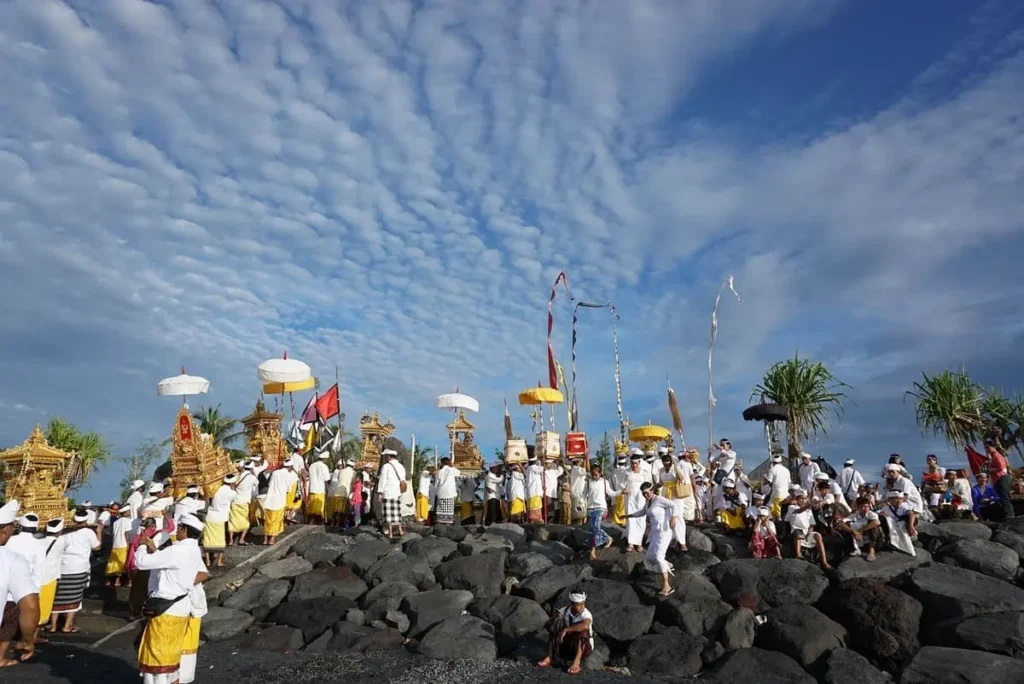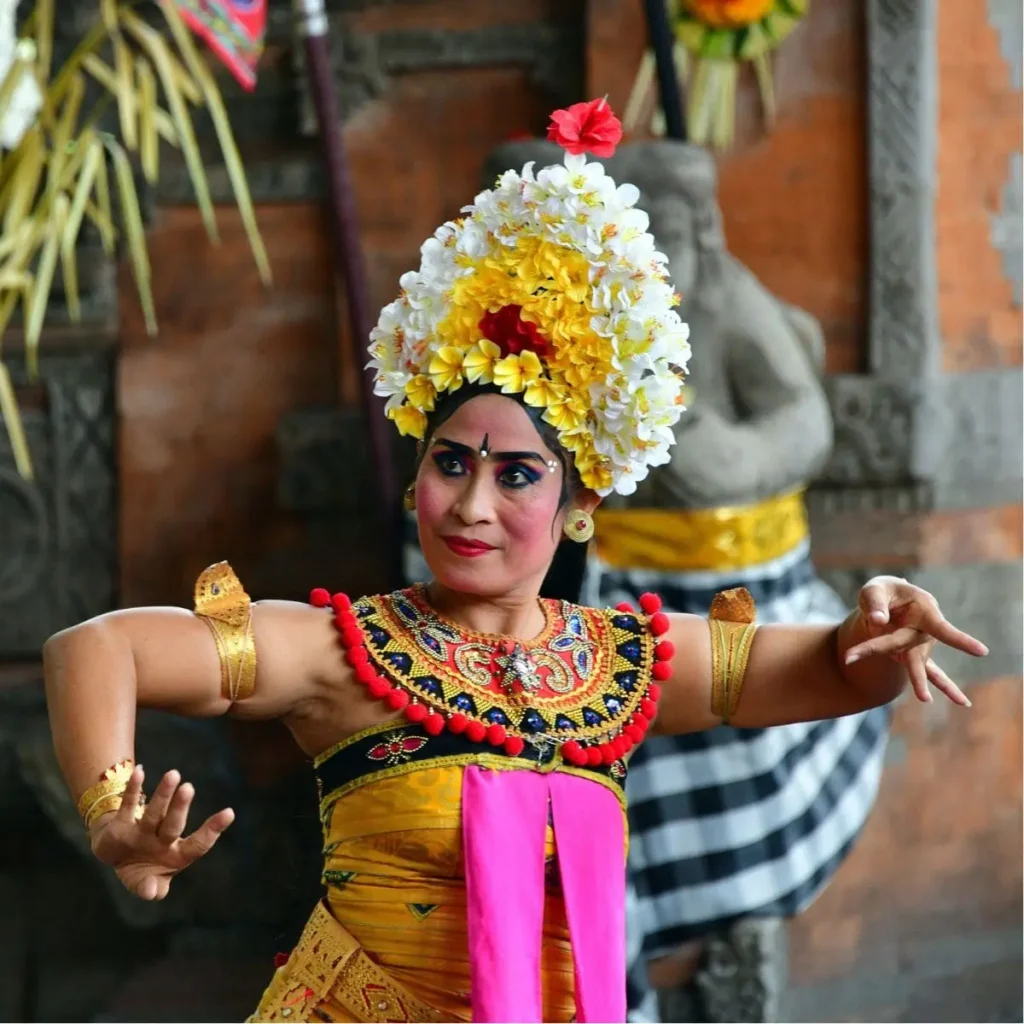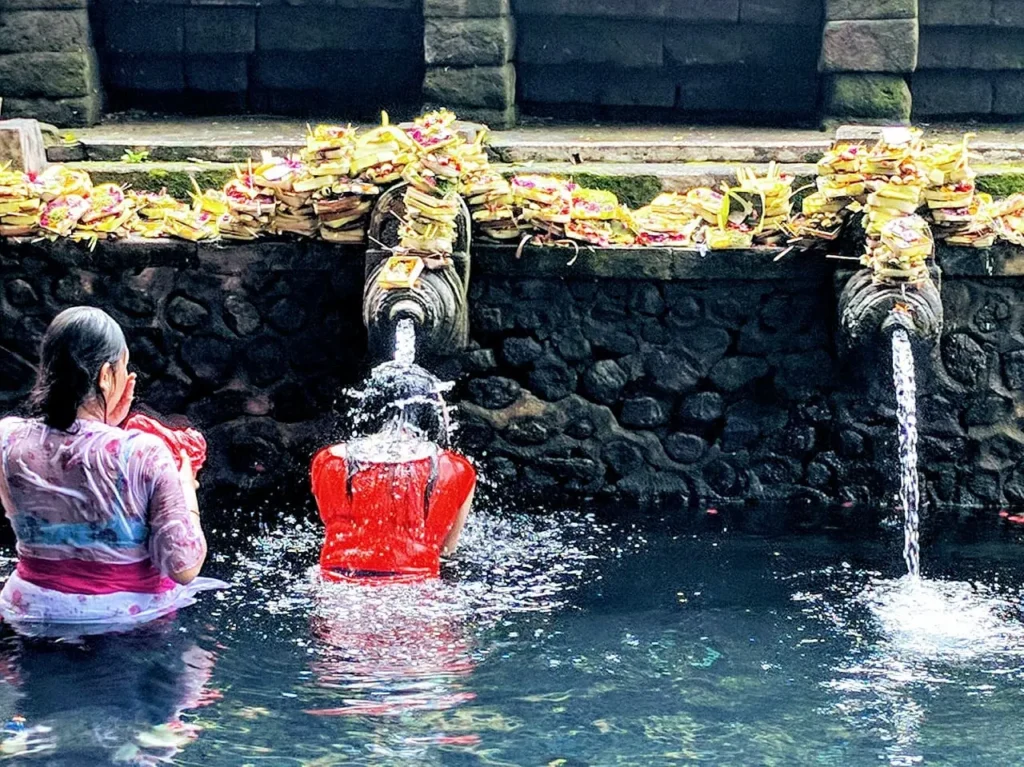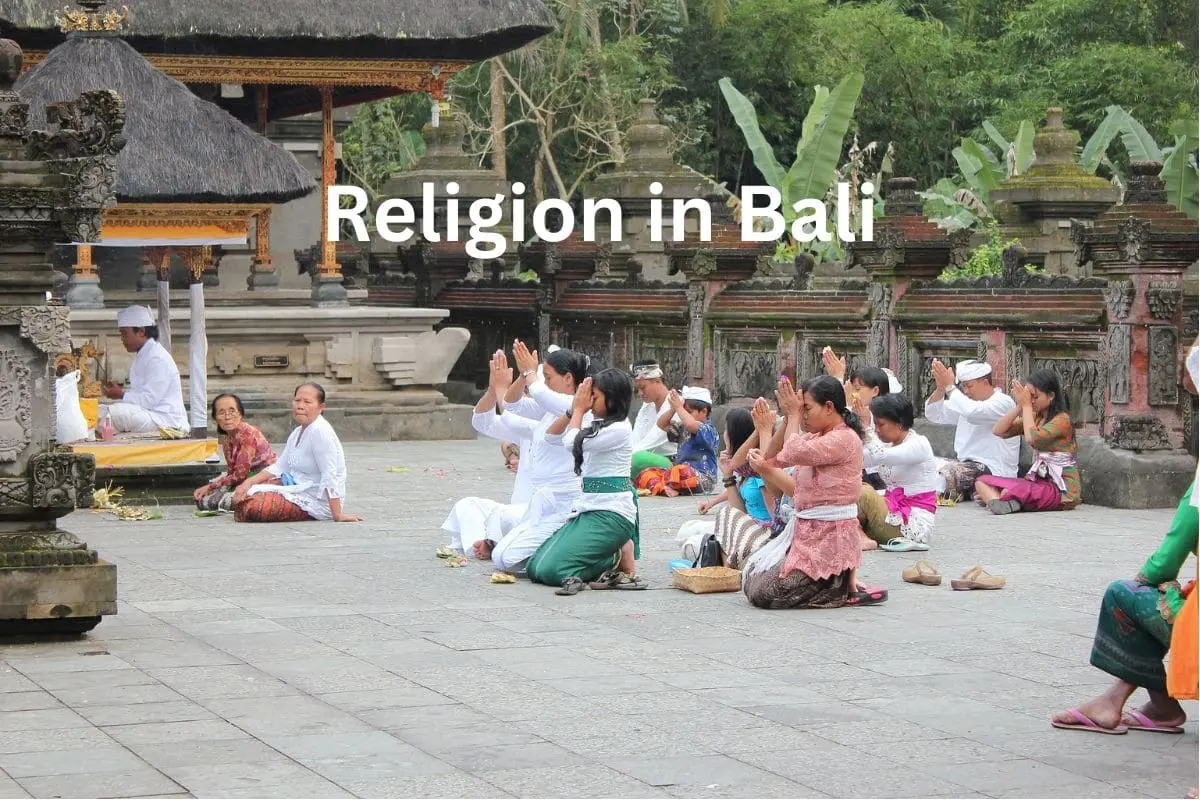Religion in Bali is not just about beliefs. It’s a part of everyday life. From the moment they wake up to the time they go to sleep, the people of Bali live their religion. You can see this in the daily offerings they make, the grand festivals they celebrate, and the beautiful religious art they create.
Most people in Bali follow a unique form of Hinduism. But Bali isn’t just about Hinduism. The island is also home to other religions like Islam, Christianity, and Buddhism.
What’s truly special about Bali is how these different religions live together peacefully on this small island. In Bali, having different religions doesn’t cause problems; instead, it makes the community more vibrant. Everyone respects each other’s beliefs. This harmony among different religions is one of the things that makes Balinese culture so special.
In this blog post, I am going to take a closer look at the main religion in Bali. I’ll explore Balinese Hinduism in more detail, talk about the other religions on the island, and see how these diverse beliefs influence Balinese art and society. We’ll also talk about how tourists can experience these religious practices firsthand and how they can do so respectfully.
What makes Balinese Hinduism more unique

Balinese Hinduism, or Agama Hindu Dharma, is a religion in Bali that mixes Animism, Ancestor Worship, and Buddhism. It was brought to Bali around the 8th century. From that time, it blended different beliefs and practices from those religions, creating a unique version of Hinduism found only in Bali. (source: Bali Work Group)
Tri Murti: Brahma, Vishnu and Shiva
Balinese Hindus recognize the classical Indian trinity, consisting of Brahma (the creator), Vishnu (the preserver), and Shiva (the destroyer). These three gods are seen as different manifestations of the supreme god Sanghyang Widhi Wasa. (Source: Bali Culture Tours)
Life After Death
They also believe in a cycle of being reborn after death, called Samsara. The ultimate spiritual goal for them is Moksha, where they become free from this rebirth cycle.
Special Temples
Their temples, known as Pura, are special open-air places set up in a specific style for praying and conducting rituals.
Galungan and Kuningan
Galungan is a big, ten-day festival that cheers the win of good over evil and is a time when ancestors’ spirits visit. Kuningan marks the end of Galungan and signifies the time when these spirits return to their places.
Nyepi (A Silent Day)
Nyepi is how they celebrate New Year – in total silence. Everyone stays quiet for a day, and there’s no travel in or out of the island.
More Notable Events
Other events include Melasti, a ceremony for purifying spirits, and Saraswati, a day for celebrating knowledge.
Bali’s Religion and it’s Influence on Lifestyle
This religion touches every part of life in Bali. From day-to-day activities to big festivals, it’s a vivid and lively display of their beliefs. Tourism has injected money into Bali and might have also amplified the pride and joy in their religious and cultural celebrations. This religion plays a huge role in daily activities, rituals, and the overall cultural vibe you experience in Bali.
Why Dance Matter in Ceremonies

In Bali, dance and drama are really important in religious events. They’re not just for entertainment. They have a deep tie to the island’s religious activities. People dance with detailed movements of their fingers, hands, and eyes. They tell stories through dance. The dances are like gifts to the gods and are crucial parts of religious rituals.
Bali has a wealth of different dance styles. One of the known dance dramas includes characters like Rangda, a witch, and Barong, a big beast. Each dance style has its own place. Some are considered very sacred, called “Wali.” Some are semi-sacred, known as “Bebali.” And others, known as “Balih-Balihan,” are for fun or social events. Since I am talking about, please also read my article about the UNESCO recognised dances of Bali.
The way temples are built in Bali
Bali has a special way of building temples, and it’s an old tradition. This way of building comes from Hindu beliefs. A Bali temple, or “pura”, has a special layout that follows the “trimandala” concept. Usually, you’ll find a “padmasana” which is a throne to worship the top god. There’s also a “pelinggih meru” which is a tower with many levels, and several pavilions.
Statues and symbols are very important in Bali’s religion. They want their traditional buildings to be in sync with nature. So, they use natural materials like thatch for roofing, bamboo poles, woven bamboo, coconut wood, teak wood, brick, and stone. It’s all about making sure their buildings and the environment work together harmoniously.
Telling Stories Through Paintings
Bali paintings love to tell stories from old tales, rituals, local myths, and the stunning landscapes of the island. One standout style is Kamasan painting. It visually tells stories from Hindu-Javanese tales like the Ramayana and Mahabharata, using color and detail in a beautiful way.
When western artists came to Bali in the 19th century, they brought new, modern styles with them. Balinese art started to change and take on these new styles. But, even with these changes, the spiritual themes Bali is still there. So, today’s Balinese art is a blend: it respects its traditional, spiritual roots while also exploring new, modern ideas.
Balinese Religion for Tourism

One of the unique attractions is the “melukat,” a ritual that cleanses the soul with prayer, meditation, and holy water, called tirta. Although it’s a Hindu practice, priests warmly welcome everyone, including visitors, to join in.
Bali’s festivals and holy days are a global magnet, inviting travelers to gaze at its beautiful ceremonies and get a glimpse of how locals celebrate life in various ways. Some big celebrations you might see are Melasti, a cleaning ritual before the silent day Nyepi; Galungan, which cheers the win of good over evil; and Kuningan, the day recognizing the farewell of ancestral spirits. Each event is a blend of joyful celebration, vivid color, and deep respect for life and heritage.
TIP: If you’re heading to holy places, it’s good to wear modest clothes, that cover knees, shoulders. Don’t dress provocatively
Impact of Tourism on Religious Practices and Temples
Tourism in Bali is a mixed bag. Sure, it brings in money and even boosts pride in local customs. But it’s not all good news. It also tweaks traditional practices and ceremonies. One local leader, Ida Pandita Acharya, shares a big worry: “Can our religion stand strong against capitalism?” In times gone by, Balinese people used special rituals to stay in tune with nature and keep a friendly balance with the gods. Now, even though these rituals still happen, many people are looking more at material stuff. Top-level decisions are making the group wisdom fade, shaking stable cultural norms, and pulling traditions out from their roots. But despite these storms, Balinese people hold tight to their traditions, wrapping them carefully through their community and family lives, even with the waves of tourists around them. (source: How Mass Tourism Is Destroying Bali And Its Culture – Worldcrunch)
That was it about the religion in Bali. I hoped you gained some insights and learned some valuable things. If you have any questions or want to comment, it can be done below.
Thank you for reading!
Hi I am Dwi. I am a blogger, travel agent and a mom of a lovely daughter and wife to a supportive husband. I customize and plan tours in Bali and islands nearby for a living and have been doing this for more than 14 years. Get in touch via contact [at] taletravels.com
